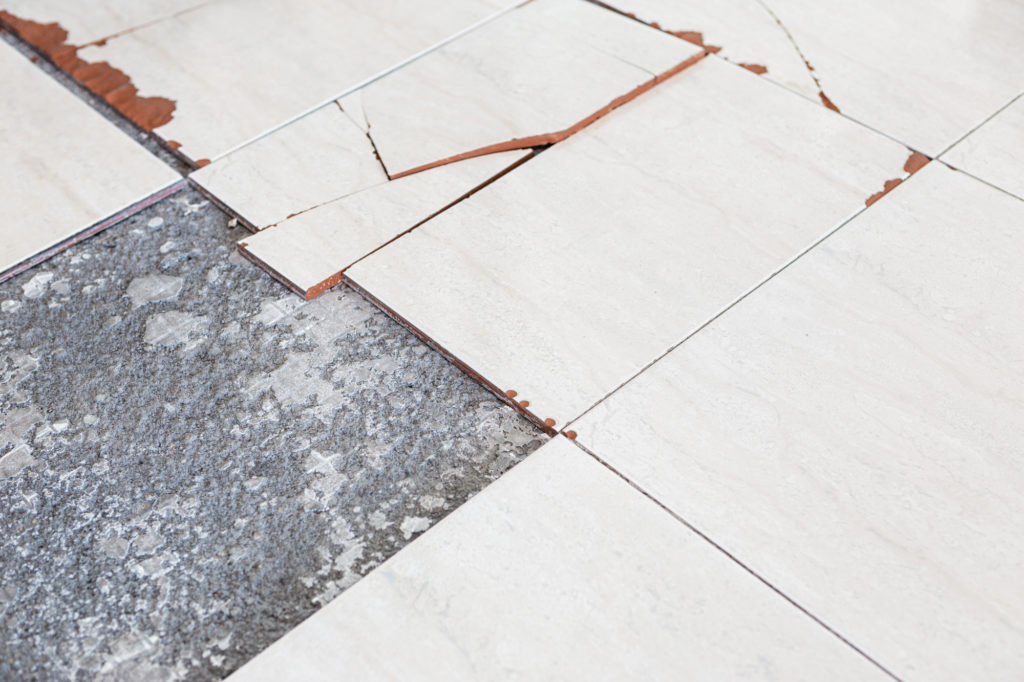Understanding potential hazards like asbestos is vital for a safe home environment. Once renowned for its fire-resistant properties, asbestos poses hidden dangers to our domestic spaces.
The health risks of asbestos are significant and shouldn’t be ignored. Ensuring a home free from these threats aligns with modern values of cleanliness and prioritizes your loved ones’ well-being. When taking measures to ensure a healthy living environment, always check these identifiers to be thorough and accurate in your approach.
Unveiling Asbestos: Older Homes’ Hidden Threat
Asbestos, previously lauded for its insulation capabilities, is now a recognized health hazard. Many older homes integrated this material, making it a current-day concern.
- Origin And Usage: Asbestos was favoured in construction because of its flame resistance, strength, and insulation abilities.
- Health Concerns: Breathing asbestos fibres can lead to serious respiratory diseases, including asbestosis and certain types of cancers.
- Common Applications: Asbestos was widely used in roofing shingles, ceiling and floor tiles, and insulation, especially around boilers and ducts.
The historical use of asbestos in older homes underscores the need for safety and tidiness.
Safety And Tidiness: Hand In Hand
While an organized home is appealing, its safety holds paramount value, ensuring peace of mind.
- Safety First: Deep cleaning or renovating an older home can bring a refreshing change, but it’s vital to exercise caution. Before embarking on such projects, research your home’s history and construction materials. If your home is several decades old, the likelihood of encountering asbestos materials increases. Always ensure the proper removal of any hazardous waste, including potential asbestos, to maintain a safe environment.
- Warning Signs: The durability of many home materials can fade over time. However, some signs of wear aren’t just aesthetic concerns but potential health risks. Look for old, brittle materials showing signs of deterioration. The fragility of such materials can easily release hazardous asbestos fibres, especially when disturbed.
- Red Flags: Not all ageing materials in homes contain asbestos, but some are more suspect than others. If you come across old tiles that show signs of discolouration, plaster that crumbles upon touch, or insulation materials that have lost their resilience, consider these as indicators of potential asbestos presence. These are more than cosmetic issues; they are callouts for a professional evaluation to ensure your home remains safe and beautiful.
The need for cleanliness and caution in older homes becomes evident, especially when decluttering areas with potential asbestos.
Decluttering And Asbestos: A Delicate Balance
Decluttering can be therapeutic but a potential danger if asbestos materials are disturbed.
- The Asbestos Trap: Older homes renovated in the past might have asbestos hidden behind walls or under floors.
- Prevention Measures: Wear a mask and gloves when working in older homes and wet any material before removal to minimize dust.
- Health Priority: It’s always best to test suspected materials for asbestos before any decluttering project.
Decluttering homes with potential asbestos underscore the need for expertise.
Expert Intervention: Navigating Asbestos Challenges
Addressing asbestos concerns demands expert knowledge and precision. Relying on specialists ensures both safety and home integrity.
- DIY Limitations: Asbestos removal requires specific tools, safety measures, and proper disposal methods.
- Professional Evaluation: Before any major home renovations, seek a professional asbestos inspection. If asbestos is detected, hiring an asbestos removal service ensures the safe and compliant removal of hazardous materials, protecting both your health and home.
- Choosing the Right Service: Research prospective asbestos removal companies. A reputable service will have the necessary certifications, positive reviews, and experienced technicians.
Asbestos management’s complexity necessitates specialized expertise, urging methodical space inspections.
Asbestos-Free Living: A Room-by-room Guide
Removing asbestos is a meticulous process. Each room should be considered separately for potential risks.
- Living Room: Older fireplaces and heaters may contain asbestos. Check any insulation or tiles nearby.
- Kitchen: Older kitchens with vinyl or linoleum tiles might pose risks, especially if they are deteriorating.
- Basement: Asbestos was commonly used to wrap old boilers, pipes, and ducts.
- Attic: Vermiculite insulation, popular in the past, may contain asbestos fibres. It should be approached with caution.
A room-by-room evaluation underscores the need for continuous safety checks.
Routine Checks: The Pillar Of Asbestos Safety
Regular inspections are vital for ensuring a lasting asbestos-free environment, even after initial removal.
- Scheduled Inspections: Set up a biannual or annual review of your home, focusing on older components.
- Maintenance Routines: As you check for regular wear and tear, look for potential asbestos disturbances.
- Safety Reminders: To stay vigilant, equip yourself with basic knowledge of common asbestos-containing materials in homes.
Fortifying our homes against asbestos reminds us that the goal is cleanliness and the lasting safety of our families.
Conclusion: The Asbestos-Free Home Vision
Prioritizing your family’s health involves awareness of hazards like asbestos in older homes. As you aim for tidiness, ensure your home remains free from health threats. Prioritize regular checks, professional assessments, and education to keep your sanctuary safe.

